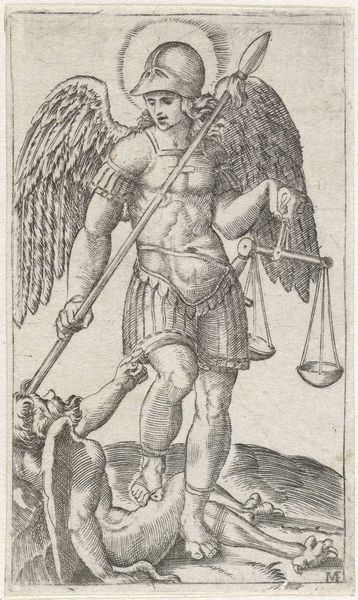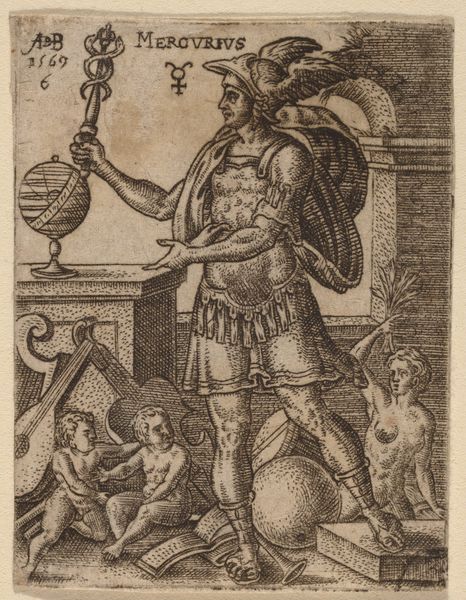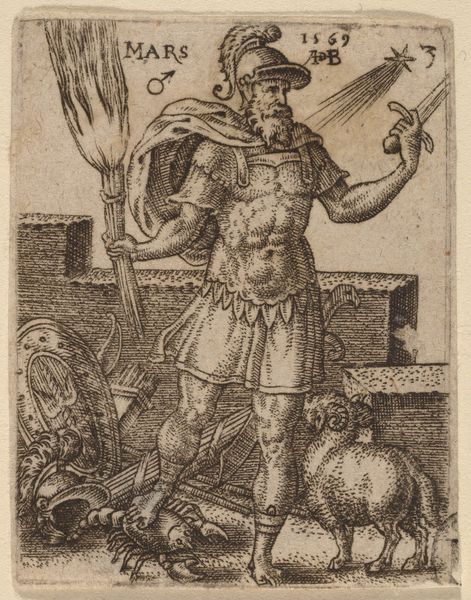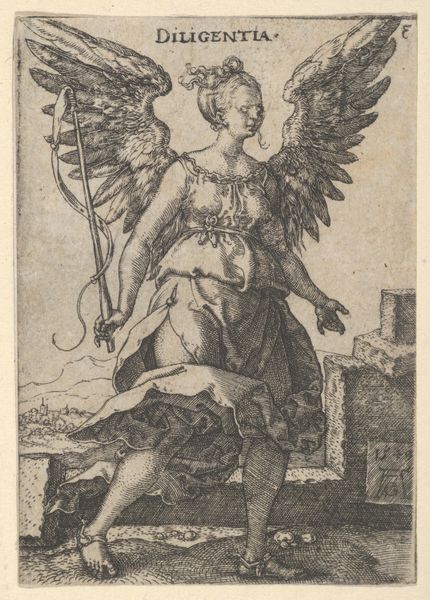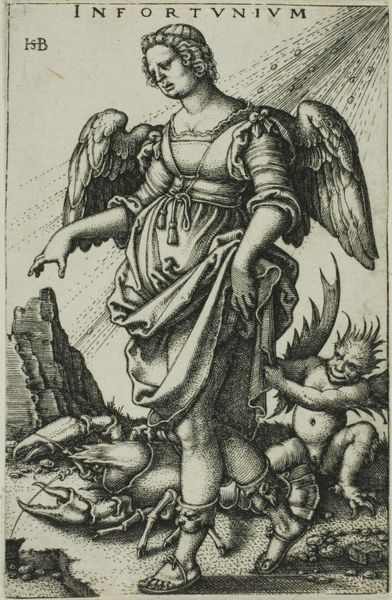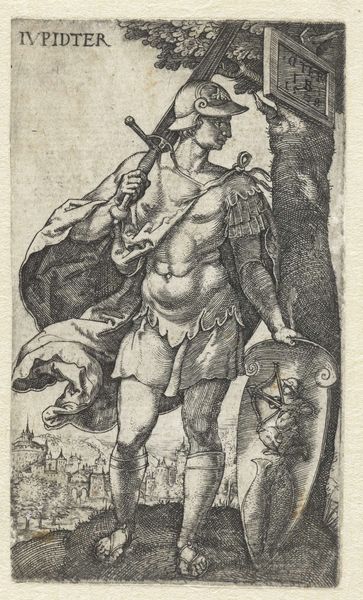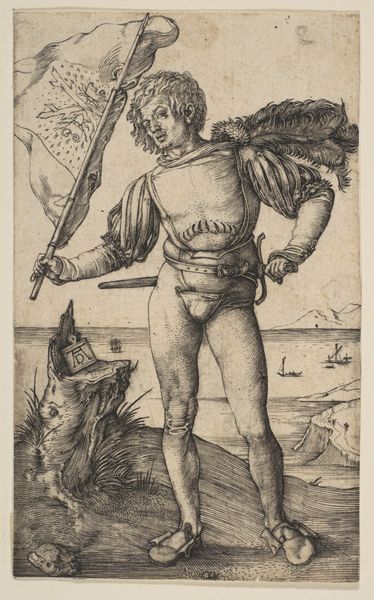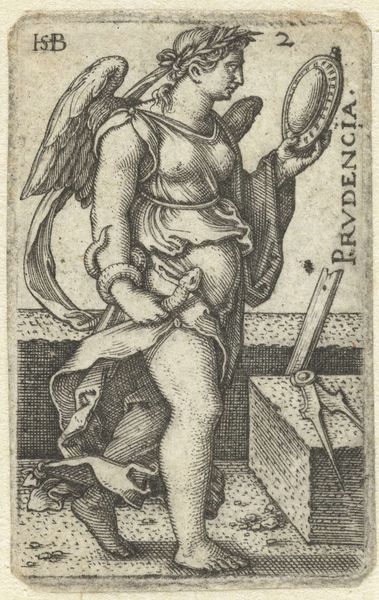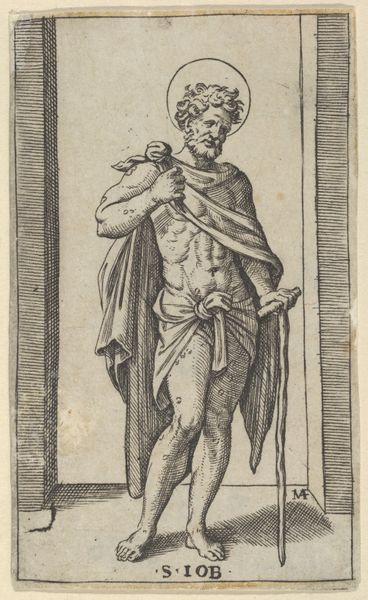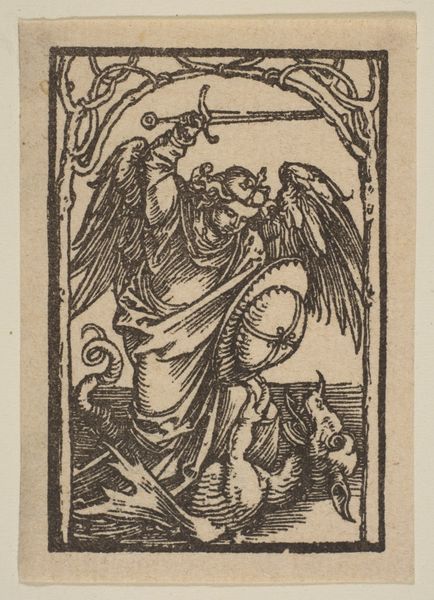
Saint Michael holding scales and a lance, a demon beneath him, from "Piccoli Santi" (Small Saints) 1495 - 1532
0:00
0:00
drawing, print, intaglio, engraving
#
drawing
#
allegory
# print
#
intaglio
#
figuration
#
11_renaissance
#
italian-renaissance
#
engraving
Dimensions: 3 1/4 x 1 7/8 in. (8.2 x 4.8 cm)
Copyright: Public Domain
Curator: Today, we'll be looking at an engraving of Saint Michael holding scales and a lance, with a demon beneath him, from "Piccoli Santi," or "Small Saints". This work is attributed to Marcantonio Raimondi, created sometime between 1495 and 1532. Editor: The detail in this small print is arresting. There is something brutally serene about it—the meticulous crosshatching giving so much volume and tone in such a limited palette. Curator: Indeed. Note how the figure of Saint Michael dominates the composition, a study in controlled, almost geometric form. Observe the texture created by Raimondi’s skillful use of the burin. See how it models the saint’s armor and wings? Editor: Right, and it's impossible not to notice the inherent power dynamics visualized here, right? Michael’s foot firmly planted on the demon signifies dominance. The scales represent justice, yet who decides the measure, I wonder? It highlights a complex relationship of power, especially as Michael holds a lance, almost penetrating the demon's mouth. Curator: That interpretation certainly brings in the theoretical readings of dominance and subjection. But formally, consider the deliberate contrast between the smoothness of Michael's skin and the grotesque, textured depiction of the demon. Editor: Grotesque is certainly one way to put it, and I am happy to dive into that. Surely the aim here isn't simply aesthetics. The contrast seems intended to evoke revulsion and othering to those outside of the sphere of Michael's sainthood, as you describe it. This piece seems so focused on visually creating moral binaries through figuration. Curator: Perhaps. Consider though, the way the light catches on the scales, and is evenly distributed through a range of different engraved forms, the halo, armor, etc. Note also the grounding diagonal lines implying earth beneath. It leads the eye to a harmonic resolution, formal qualities foremost. Editor: These kinds of depictions of good versus evil had real, palpable social consequences. We have to question, were images such as these tools for maintaining the social order by demonizing dissent and difference during the Renaissance, or was it really an accurate description of society, then? Curator: Your focus on these figures as sociological avatars offers such rich analysis! Viewing "Saint Michael" through this contextual lens offers a provocative challenge to our understanding of the High Renaissance. Editor: Agreed, and analyzing the lines and structure that construct the scene gives further proof of that construction! This print continues to raise essential questions about representation and power, even today.
Comments
No comments
Be the first to comment and join the conversation on the ultimate creative platform.
